How to Paint a Deck – Achieve Perfect Results
This post may contain affiliate links. We may earn a small commission from purchases made through them, at no additional cost to you. You help to support resin-expert.com
Decks are a place where all the fun begins: barbeques, pool parties, or simply to relax and enjoy those cool summer evenings. You may have neglected the maintenance of your deck, however, and want to avoid the embarrassment of having guests around. This might be the perfect opportunity to give your deck a much-needed makeover and update its weathered appearance. On completion, not only will you enjoy the hours of relaxation and fun but, you will also have added value to your home at the same time. Due to the many paint and stain types available, it can be a daunting task to select the right deck paint for your project. This article will help you to learn how to paint a deck properly.
Table of Contents
Understanding Deck Paint and Stain
Your first step will be deciding to use either a deck paint or stain. We will detail the differences between deck paint and deck stain to understand which to use and how to use them. Making sure you have the right product for the job is always important.
Deck Paint
Giving your deck a new coat of paint is the fastest way to refresh its appearance. Apart from concealing the flaws in the surface of the wood, it will also mask the wood’s natural splendor. Deck paint is UV and weather-resistant and the finish can last up to 10 years before requiring repainting.
Deck paint allows one to choose from a range of different colors. A painted deck is more permanent, so ensure you are completely certain when making your decision. If you choose the deck paint route, you must continue to use deck paint, as it is difficult to switch from paint to stain. However, one can switch from stain to paint more easily.
Deck Stain
Stain allows the wood’s original grain, texture, and color to stand out. Because of this, it is preferred by many homeowners for use on their deck. You can choose between a clear sealer, a solid, or a semi-transparent stain.
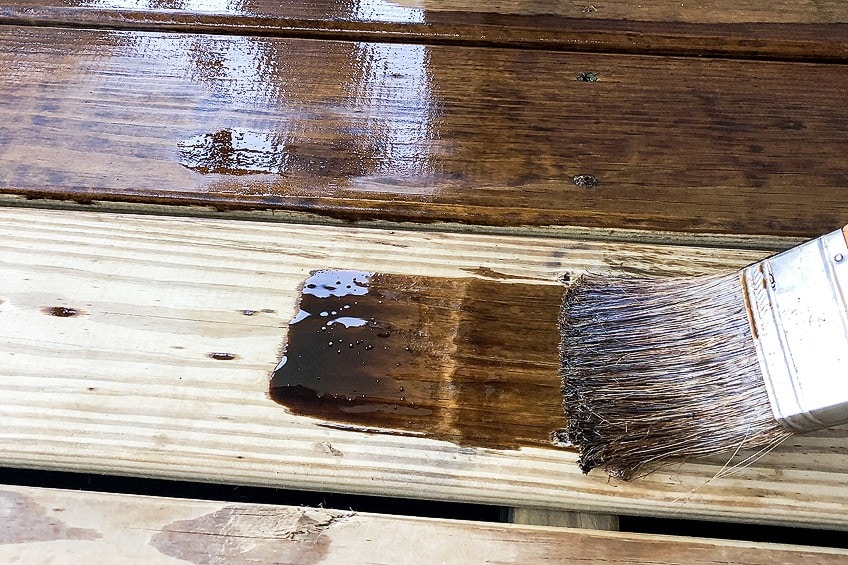
Solid Stains
These are similar to a painted surface in that they give your wood’s natural grain and texture a darker overall appearance and conceal any inconsistencies.
Semi-Transparent Stains
This wood stain variant provides a trace of color while complementing the natural grain of the wood. It offers complete protection from extreme weather conditions such as UV rays.
Clear Sealant Coatings
This type of sealer coating can complement and define the wood’s natural grain and character. Keep in mind that not all clear sealer brands contain fungicide and UV protection.
Deck staining does not have the durability of deck paint, so every few years the deck will require restaining. Staining will not conceal all the wood’s flaws. Should your deck be on the older more weathered side, we recommend you instead choose deck paint for the job. If safety is a concern, we suggest using deck stain as it provides a less slippery surface than a painted deck.
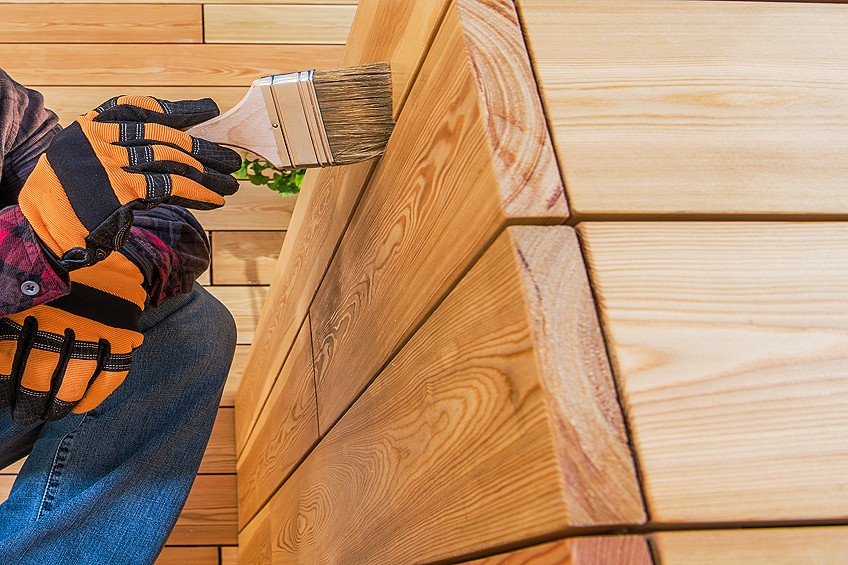
Choosing the Best Deck Paint
Once you’ve decided to paint your deck, you will need to select the best deck paint to suit your needs. Before you choose which brand to use, you will also need to consider whether to use water or oil-based paint.
If your deck has been stained or painted before, we recommend you continue using the same medium which was previously applied. The two paint types do not combine well, so you may be required to strip the old finish completely if changing the paint types.
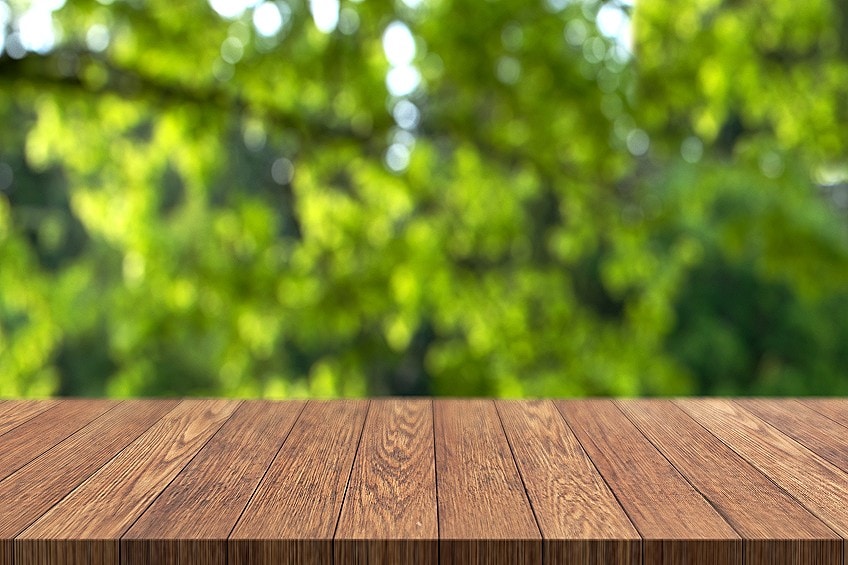
Oil-Based Paints
This type of coating penetrates the wood’s surface to provide a coating that is flake-free and will generally last up to two years. As it seeps right into the wood, the result is a surface that is UV and water-resistant, which provides excellent protection for your wooden deck. One advantage of oil-based coatings is they usually require fewer coats.
These coatings, however, also take a good deal longer to dry before the deck can be used. This can be problematic for those in high humidity or wet climate zones, as it could take up to 72 hours to completely dry. It also requires a complete absence of rain for the duration of this period. They also contain high VOC levels and some harsh chemicals. However, oil-based paints last longer and are more durable.
Water-Based Paints
Alternatively, water-based paints are safer for you and the environment. In situations where pets or children may be involved, they carry far lower levels of VOCs. Several brands offer protection from UV-rays as well as anti-slip properties and are designed to prevent mold and mildew. It is easier to use a pump sprayer instead of a brush when applying a water-based wood coating, and the drying process is quicker.
You may need to apply more coats, however, and they don’t effectively seep into the surface of the wood. This means they are less durable and may require more maintenance.
Your choice of paint product should specify that it is for exterior use. These can withstand harsh weather conditions and are best suited for decks. Interior paint does not have the characteristics to protect your deck.
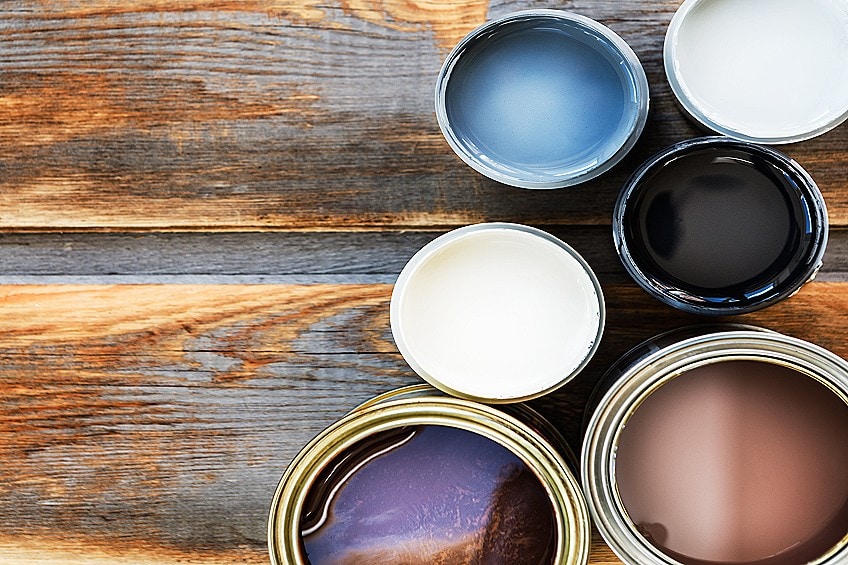
Applying Ready Seal Stain and Sealer
This product will produce an excellent finish without the need for primer and can be applied using a roller, paint sprayer, or brush. It leaves no laps or streaks behind after application and requires no diluting or thinning before use. You should wait 45 minutes between layers and only apply in light coats. Allow the surface to dry completely for roughly 72 hours. Temperature, humidity, and the porosity of the wood surface will affect drying time.
How to Use Deck Paints
Not only does refurbishing your deck add value to your home, but you feel even more inclined to welcome guests over to spend time together. Before you begin painting your deck, here are some steps and tips to assist you along the way.
Preparing the Area
Research and decide to use either paint or stain and then choose between water-based or oil-based products. You will then need to decide between either choosing to cover the wood over or enhance the wood grain. Deck paint will conceal an old deck’s cracks and marks, while a wood stain will preserve the natural beauty of a deck. Should you decide to use deck paint to cover the wood, be sure to select a color that matches the surrounding area.
Alternatively, if you choose to preserve the natural character of your wood deck using a wood stain, you must choose between a semi-transparent or clear stain coating. Ensure the wood surface is prepared. This may involve scraping, sanding or power washing to completely remove all stains, dust, dirt, and old marks. This allows the wood coating to properly adhere to the surface.
Fill any cracks present and repair any loose or damaged boards, then, use stain remover in areas where you find any water or rust marks. When applkying the best deck paint for old wood, pay extra attention to preparing the old wooden surface. To ensure complete safety, we recommend leaving the painted surface for at least 48 hours to dry properly.
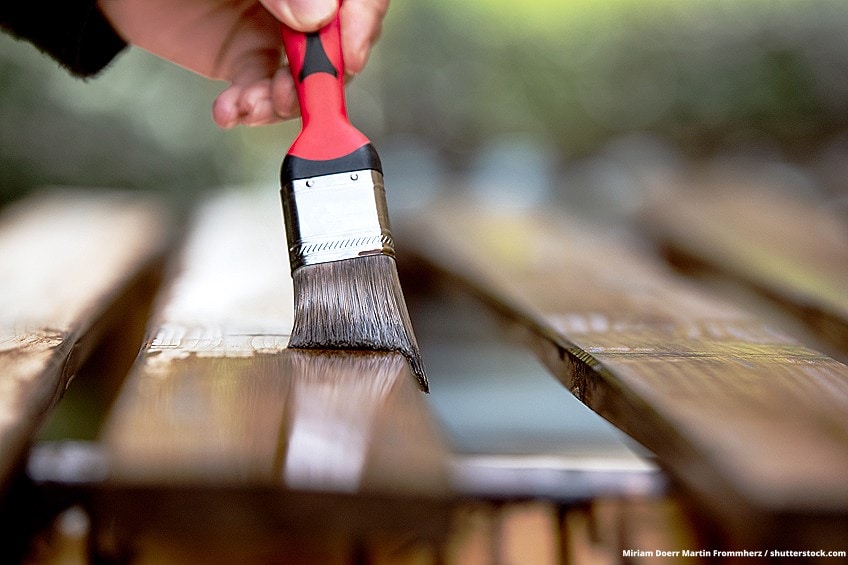
Applying the Deck Coating
Select a day with ideal weather conditions, as rain will not be favorable. Ensure the surface is not in direct sunlight by waiting until the sun passes over the desired work area. Prevent paint from reaching undesired areas such as walls or windows by using masking to cover them. Use sheets of plastic in the areas you require and trim the hard to reach areas first by using a brush.
Use a roller or sprayer for application of the initial two coats and ensure the paint has dried before applying the second coat and leave overnight to dry completely. We recommend waiting up to 48 hours before moving furniture over or walking on the surface of the freshly painted area
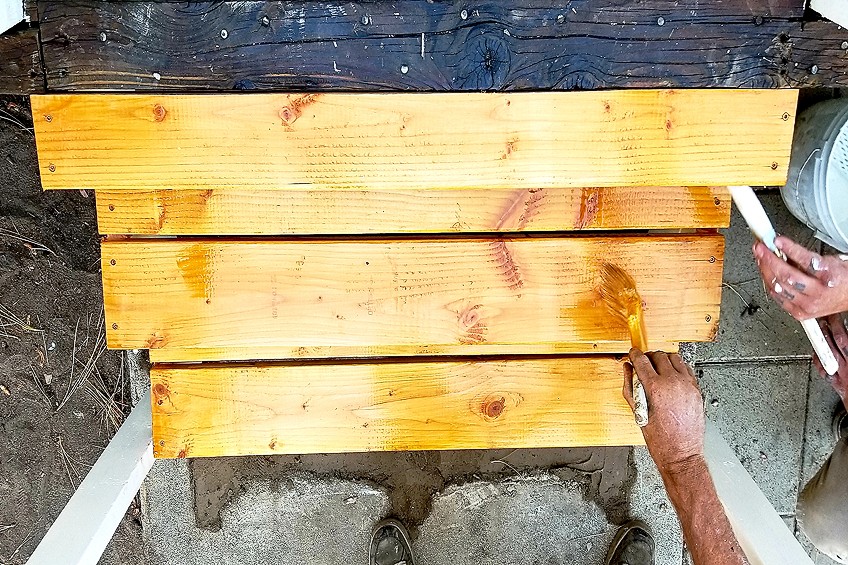
Frequently Asked Questions
Is Oil-Based or Water-Based Paint Better?
This depends on the specifications of your project. water-based paint is less toxic, easier to use, and more affordable. However, it is generally less durable. Oil-based paint offers better resistance, but it takes longer to dry and can contain harmful solvents.
Can You Rely On Coverage Rates?
If the wood you are using is extremely porous it will affect the coverage area, however most manufacturers of deck paint will provide a relatively accurate coverage rate for their products.
Are VOCs Harmful?
All oil-based paints contain these volatile organic compounds, which are a health hazard and can be harmful to the environment too.
Which Deck Paint is Best for High Traffic Areas?
Oil-based stains last longer, while water-based paints are often less durable. Using a stain is a good idea as it is less prone to chipping or flaking under a lot of pressure.
Is It Better to Use Deck Paint or Deck Stain?
Deck stain will allow the wood’s natural texture and grain to stand out, while deck paint will allow you to create a smooth or even one of different colors. Use whichever best suits your situation or preference.
What Lasts Longer, Deck Paint or Stain?
Deck paint is usually longer lasting than deck stain, however, this is dependent on the weather, the frequency of traffic present, and also how carefully maintained the surface is.
Is a Primer Required When Applying Deck Paint Coatings?
Primer is only required for use with some brands. Follow the manufacturer’s usage recommendations each time you use a specific product.
Finding the best deck paint can be confusing with so many different options available. We hope to have helped and inspired you to find the perfect exterior deck paint for your DIY project. We wish you happy painting ahead!

